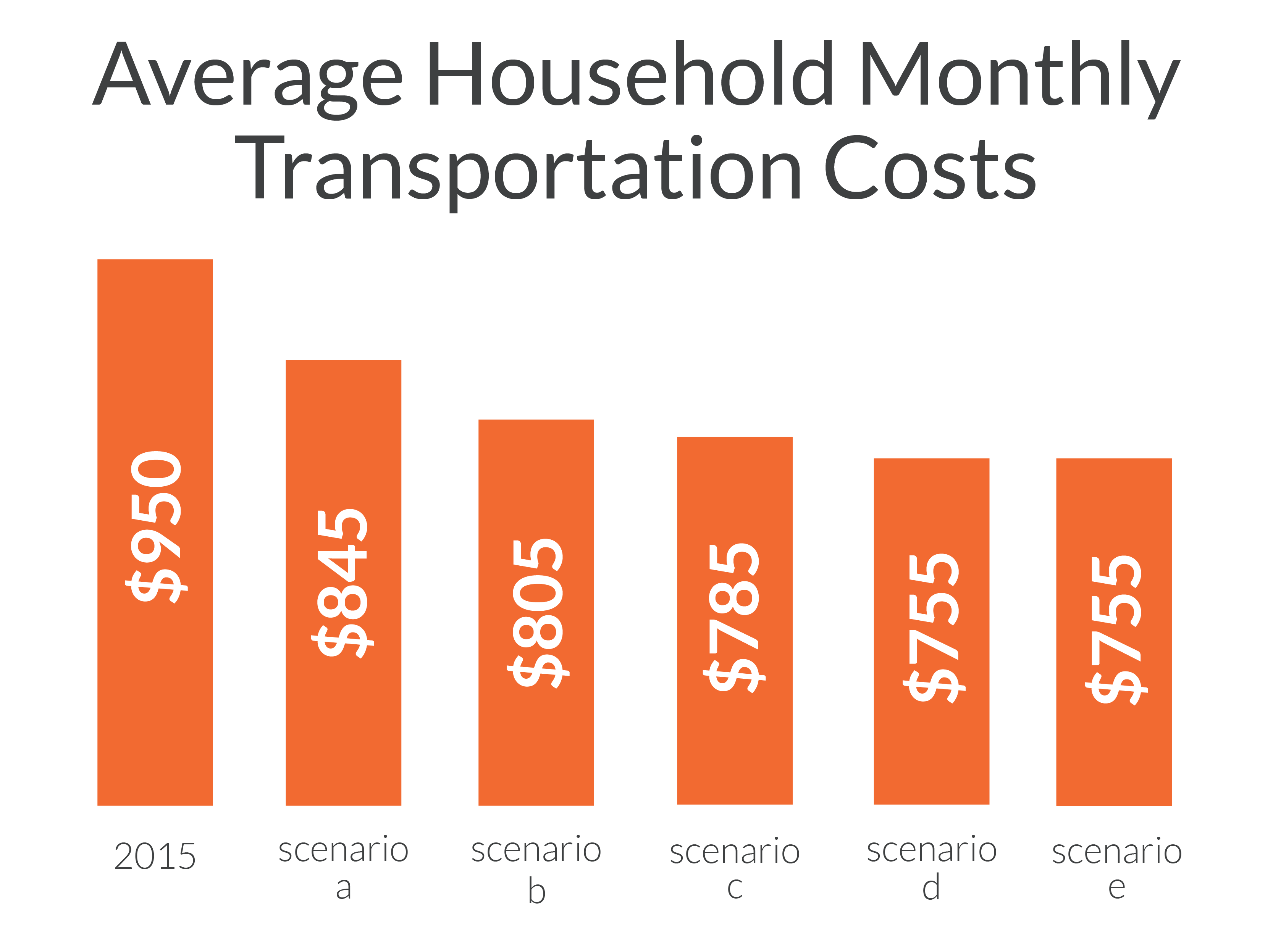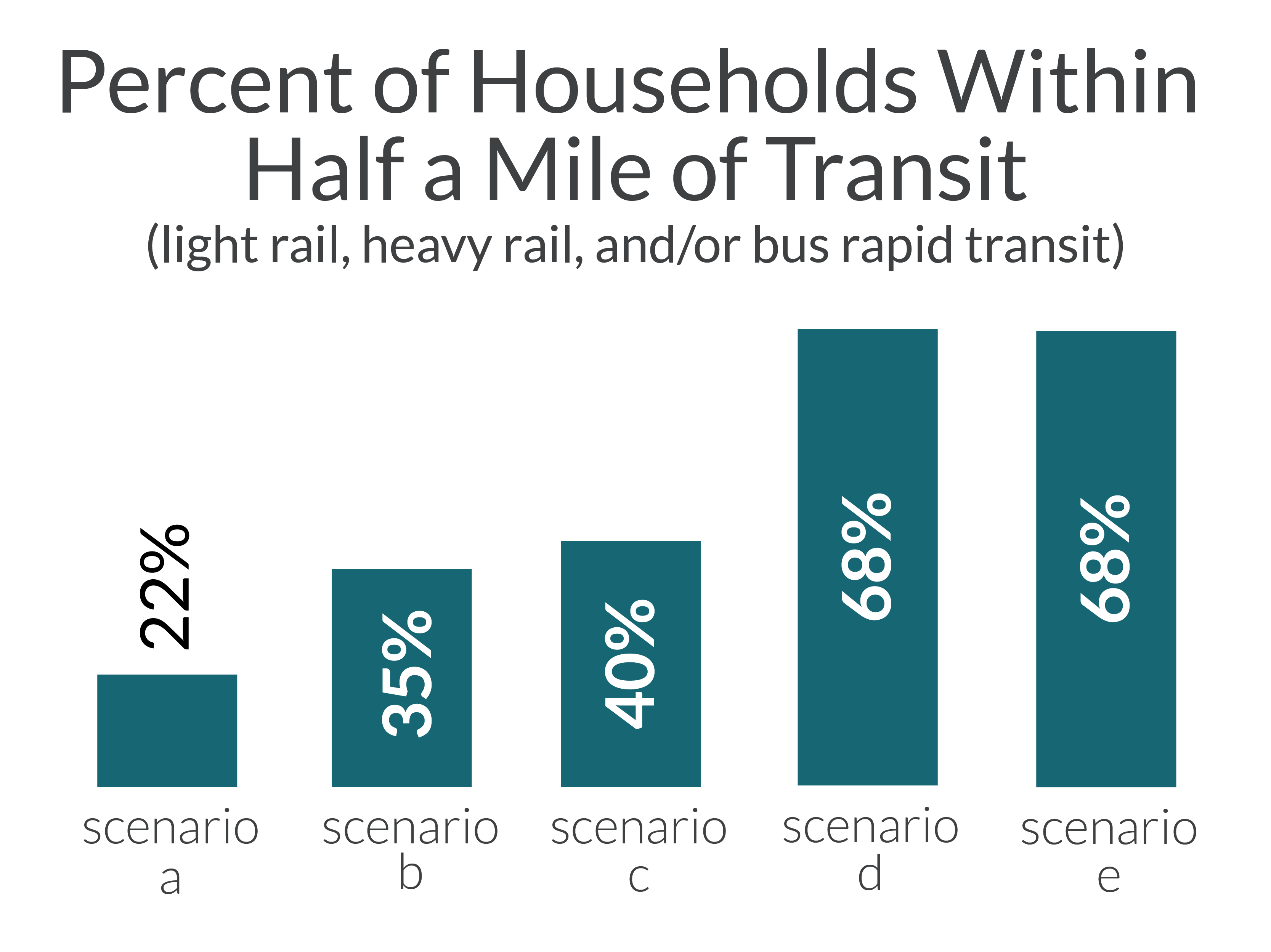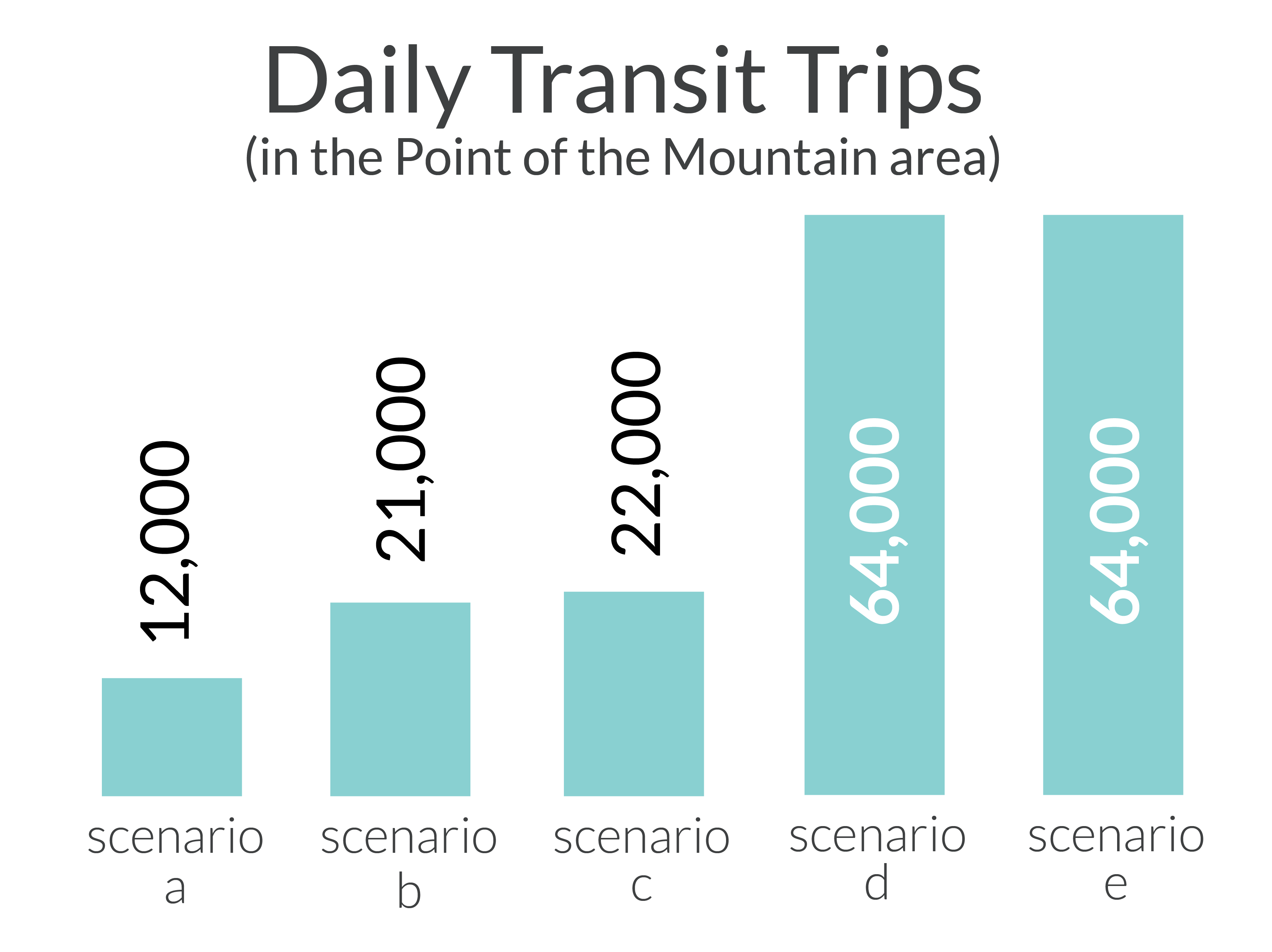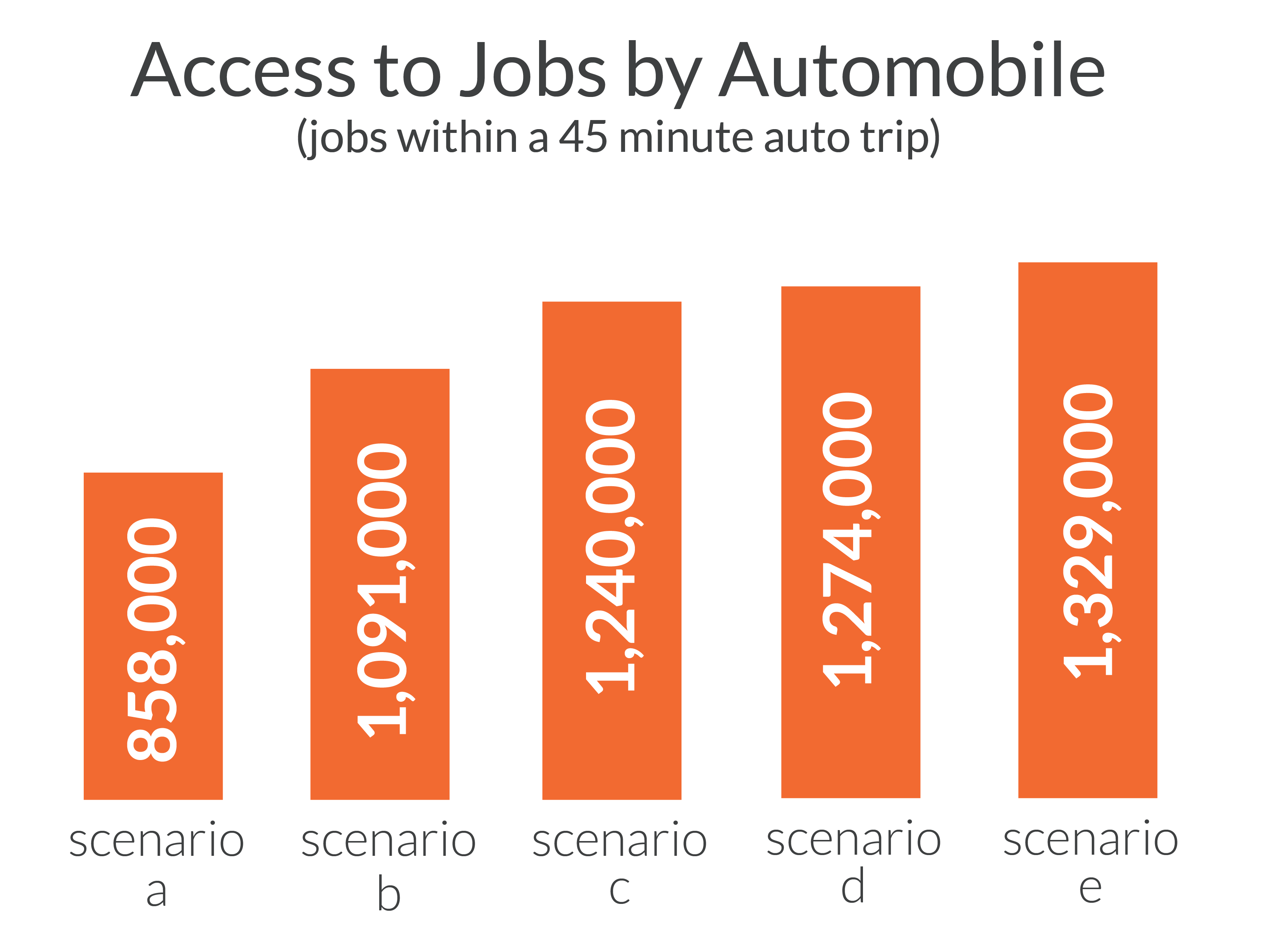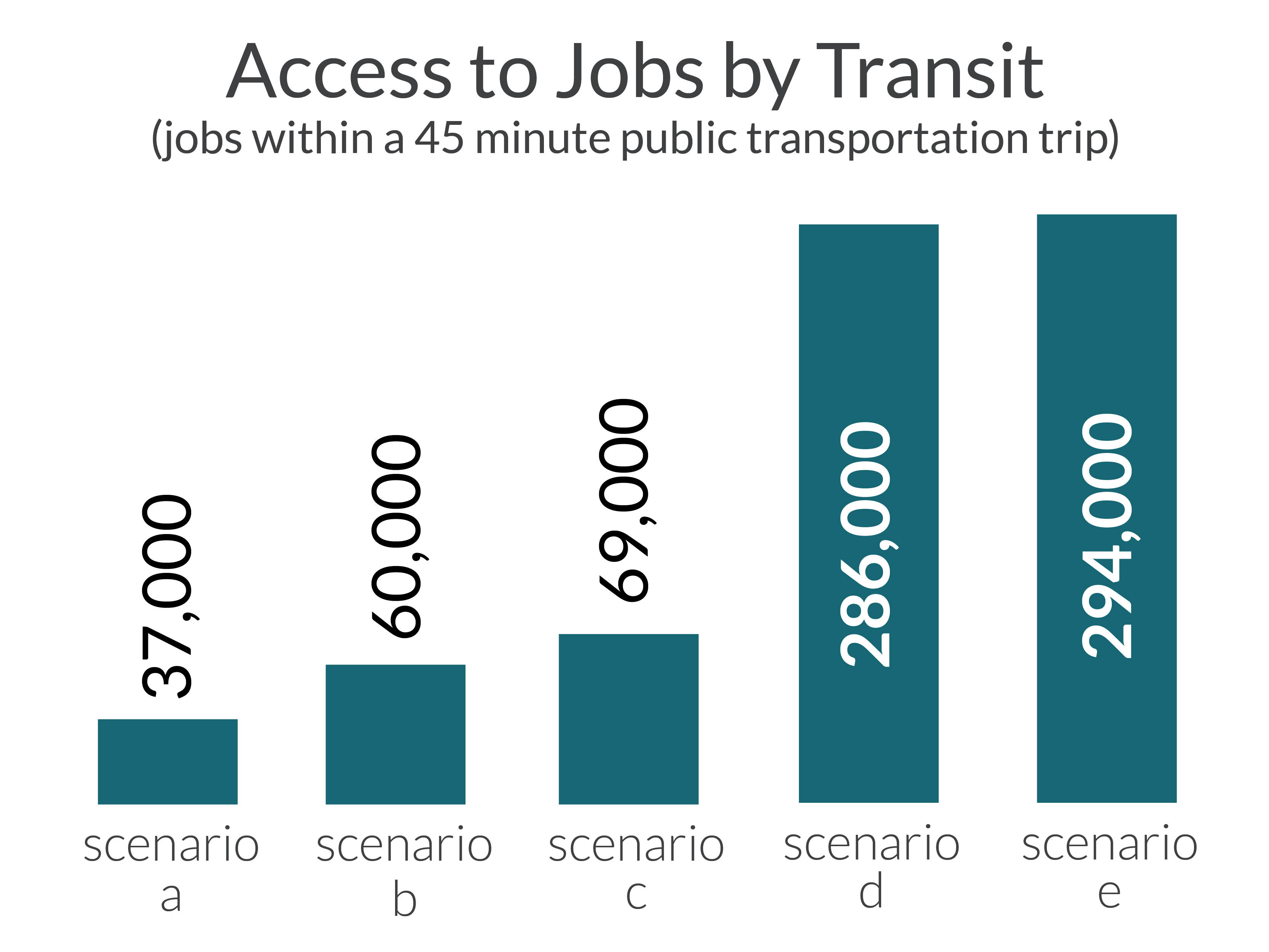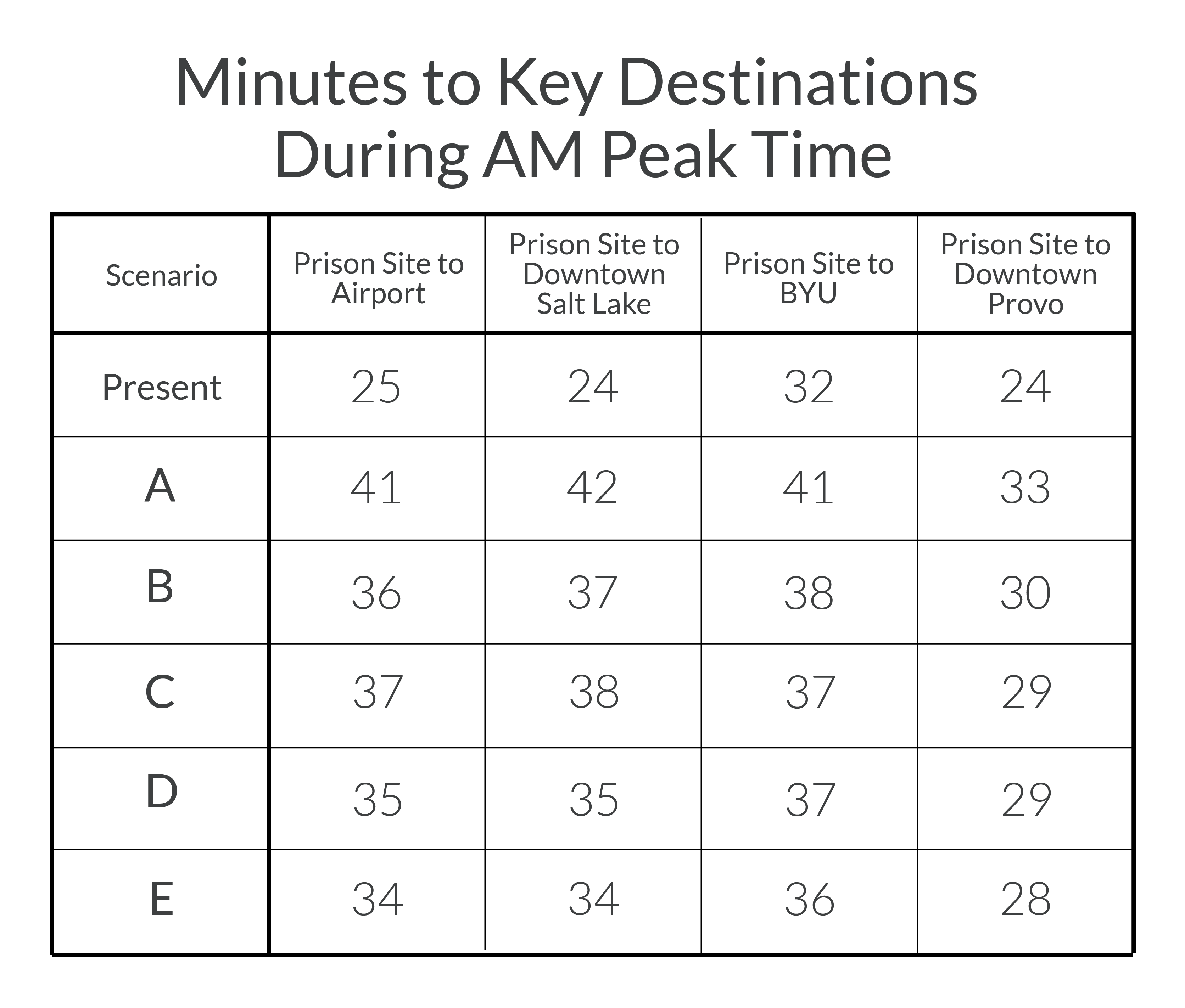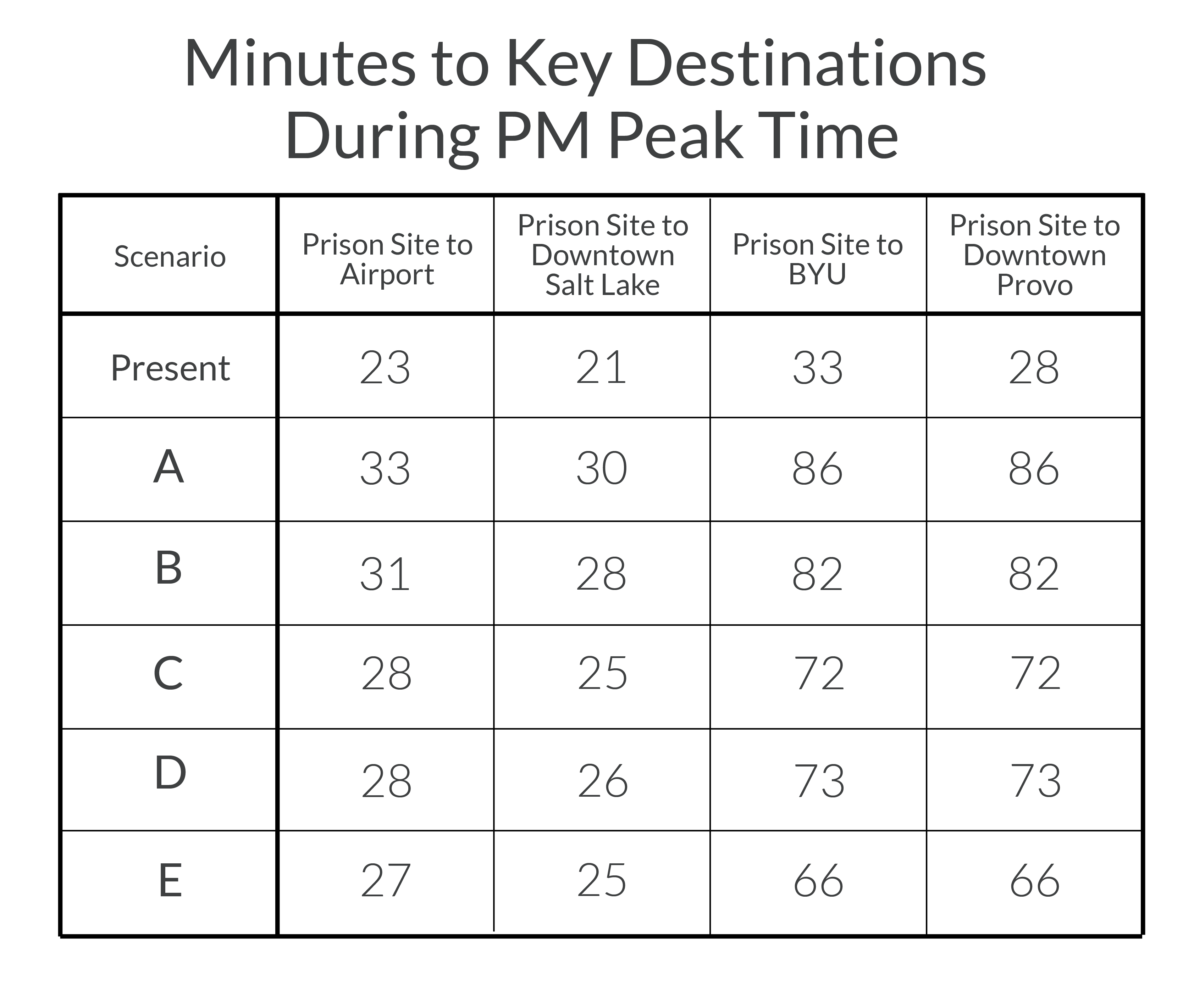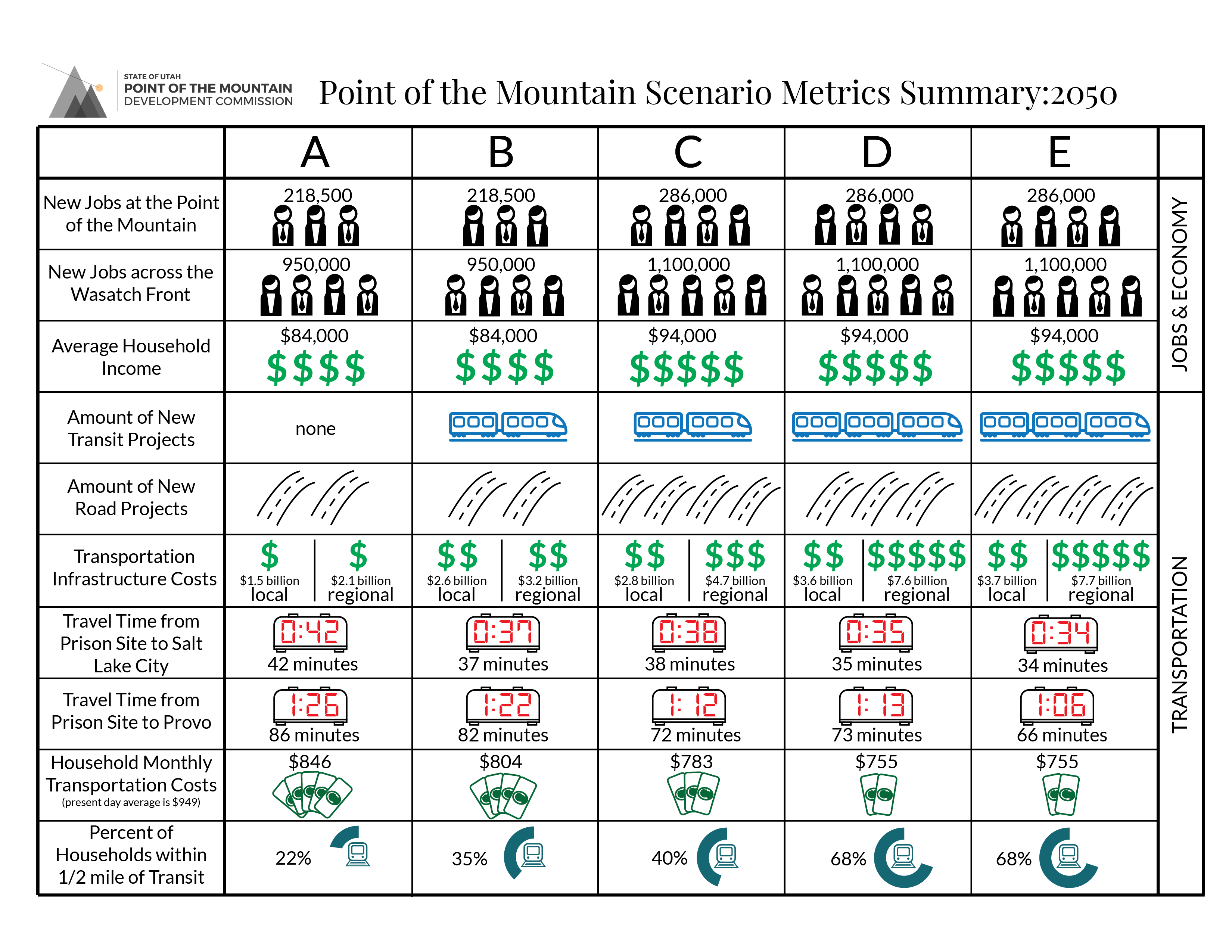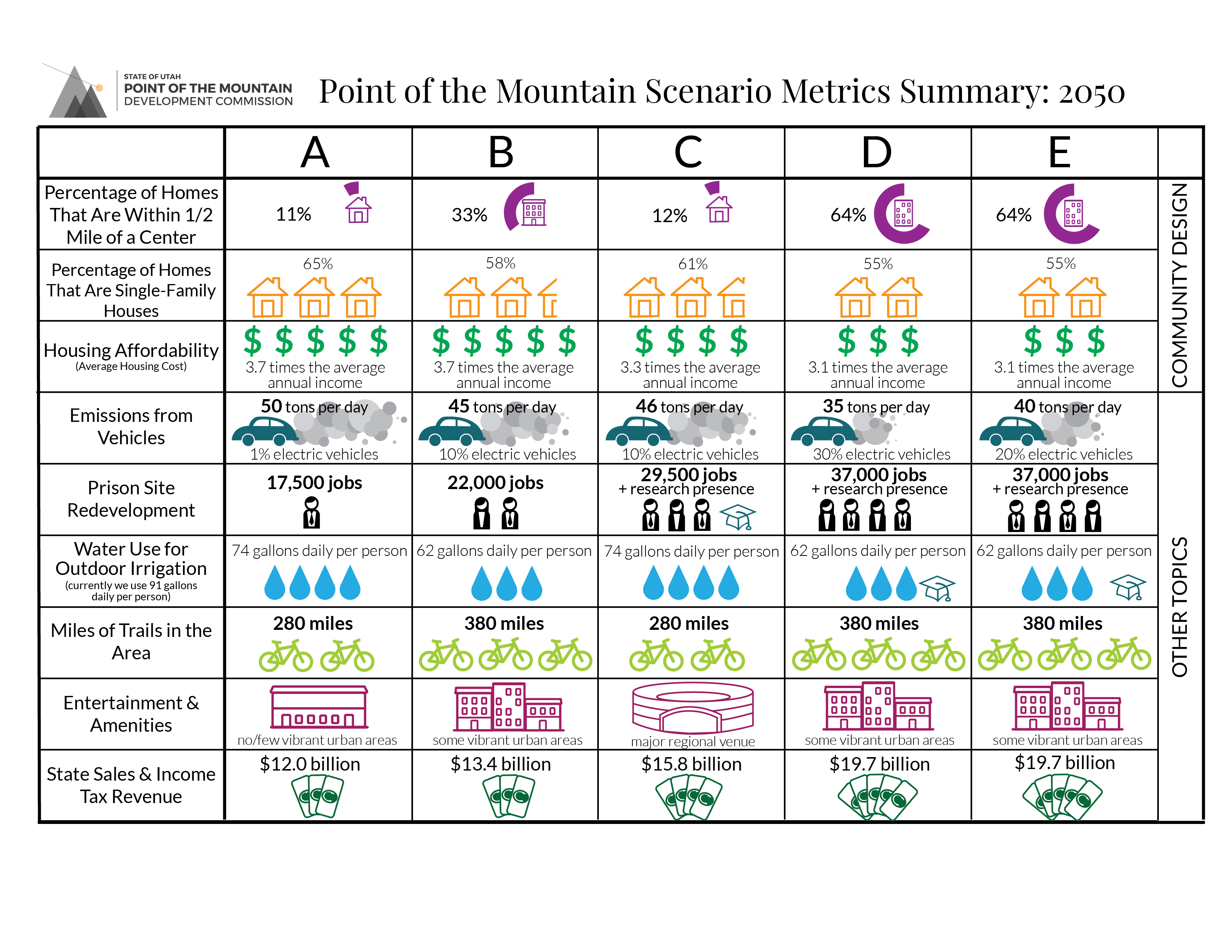The Story
Transportation funding sources aren’t expanded, which means there are some new road improvements but no new transit projects. Single-family neighborhoods are generally disconnected from commercial hubs and job centers. Local roads often don’t connect, so people must travel on larger arterials and freeways to reach destinations. People spend more time and money on driving in this scenario than in any other, but infrastructure costs are lower than in any other scenario.
Funded road projects in this scenario include:
- The Mountain View Corridor expanded as a freeway through SR-73 (with 8 total lanes, in addition to frontage roads)
- A 2100 North freeway in Lehi
- I-15 widening projects (12 total lanes)
- Redwood Road widening projects (6 lanes north of Porter Rockwell and 4 lanes south)
Results
- From the Point of the Mountain during AM peak period, it takes 42 minutes to drive to downtown Salt Lake City, 41 minutes to the Salt Lake airport, and 52 minutes to the University of Utah. During PM peak period, it takes 82 minutes to drive to downtown Provo.
- A typical Point of the Mountain resident can access 850,000 jobs within a 45-minute commute by car, or 37,000 jobs within a 45-minute commute by public transportation.
- 12,000 trips in the Point of the Mountain area are made by public transportation each day.
- On average, a Point of the Mountain household pays $845 per month for travel expenses (gas, insurance, car payments, transit fares, etc.).
- Over the next 33 years, new transportation infrastructure in the area will cost $3.1 billion for regional projects and $1.5 billion for local projects.
- 22% of homes in the area are within ½ mile of high-frequency public transportation (e.g., bus rapid transit, light rail, and heavy rail).
- 37% of the work trips from Point of the Mountain residents never leave the Point of the Mountain area.
